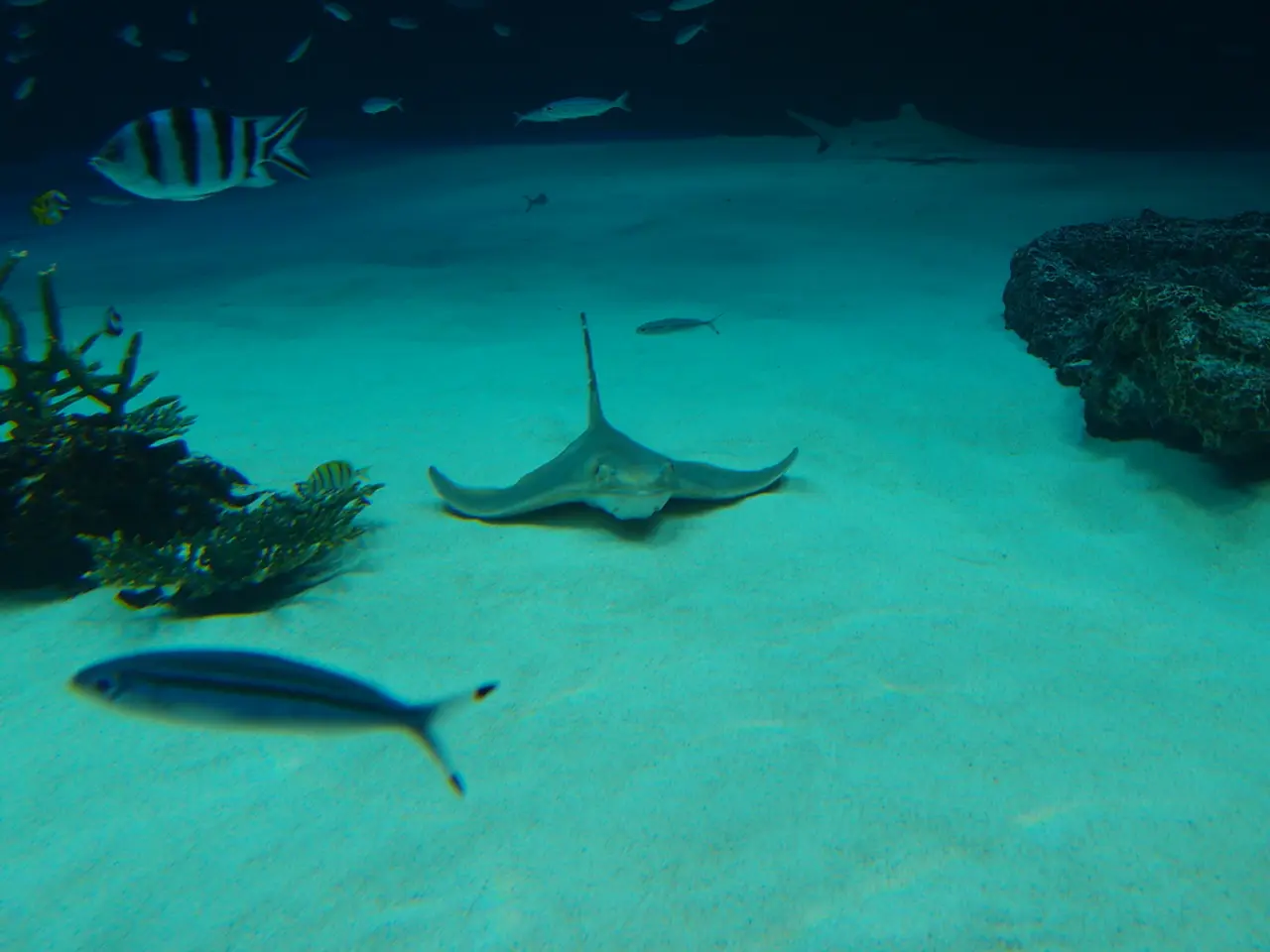Questions on Ocean Depletion of Oxygen:
The growing crisis of ocean deoxygenation is a pressing concern for marine ecosystems and human communities around the world. This phenomenon, primarily caused by human activities such as burning fossil fuels and nutrient pollution, is causing significant changes in the ocean's chemistry and biology.
The primary culprits behind ocean deoxygenation are global warming and nutrient pollution. Global warming, caused by increased greenhouse gas emissions, raises ocean temperatures, reducing the solubility of oxygen in seawater and intensifying stratification, limiting oxygen exchange between surface and deeper layers. Nutrient pollution from agricultural runoff, industrial emissions, and human waste increases nitrogen and phosphorus inputs into coastal waters, leading to excessive biological productivity (eutrophication) and rapid oxygen consumption.
The extent of ocean deoxygenation is significant and expanding. Since the 1960s, the area of low-oxygen water in the open ocean has increased by approximately 4.5 million km², with over 500 low-oxygen sites identified in estuaries and coastal zones. Coastal ecosystems, acting as nutrient filters, are particularly vulnerable, being heavily impacted by eutrophication and warming, which accelerate oxygen loss.
The effects on marine life and ecosystems are profound. Low oxygen conditions reduce growth rates, increase disease susceptibility, alter behaviour, and raise mortality in fish, shellfish, and other marine animals, thereby reducing habitat quality and biodiversity. "Dead zones" created by hypoxia severely impact fish populations and disrupt food webs, threatening ecosystem stability. Coral reefs suffer indirectly as warming and deoxygenation stress these habitats, contributing to coral bleaching and biodiversity loss.
The impact on human activities includes declines in fish and shellfish populations, affecting fisheries and threatening food security and economic livelihoods dependent on marine resources. Coastal communities, especially in low-lying island nations, face disruption due to the cascading impacts of ecosystem degradation and changes in marine productivity. The combined stressors of warming, acidification, and deoxygenation accelerate biodiversity loss with broad implications for marine ecosystem services humanity relies on.
To address this crisis, leading experts suggest increasing the availability of high-resolution oxygen measurements in various marine environments, conducting multiple stressor experiments to determine how deoxygenation, warming, and acidification interact to impact marine life, and improving the ability of models to predict current and future locations and effects of low oxygen. Incorporating science into management and policy is essential for addressing ocean deoxygenation.
Reducing greenhouse gas emissions is crucial in reducing ocean deoxygenation. Controlling nutrient runoff to the ocean is important in mitigating ocean deoxygenation. Assessments should detail the effects of deoxygenation on human economies and societies. Future scenarios for oxygen depend on a combination of drivers related to global environmental change and land-use, including warming, growing human population, and extensive coastal agricultural practices.
In summary, ocean deoxygenation is a serious and growing problem driven by anthropogenic warming and nutrient pollution. It severely undermines marine ecosystems, reducing their productivity and resilience, while also threatening fisheries, coastal economies, and the wellbeing of human populations dependent on healthy oceans. Addressing this crisis requires urgent action and cooperation from governments, industries, and individuals to reduce greenhouse gas emissions, control nutrient pollution, and protect our oceans for future generations.
[1] Rosenberg, R. D., Diaz, R. J., Levin, L. A., & McCarthy, J. J. (2004). Ocean deoxygenation: trends, mechanisms, consequences, and predictions. Annual review of marine science, 56(1), 145-172. [2] Diaz, R. J., & Rosenberg, R. D. (2015). Ocean deoxygenation: trends, mechanisms, consequences, and predictions. Annual review of marine science, 7, 341-369. [3] Thomas, E., & Visscher, H. (2009). Oxygen minimum zones: a review of past, present and future trends. Deep-sea research part ii: topical studies in oceanography, 56(14-15), 1491-1500. [4] Polovina, J. J., & Eppley, R. W. (2007). The role of ocean deoxygenation in global change. Oceanography, 20(1), 36-47. [5] Hall-Spencer, J. M., Humphrey, V. L., & Kroeker, K. J. (2011). Ocean deoxygenation: a review of the evidence from the geological record. Philosophical transactions of the royal society B: biological sciences, 366(1572), 1760-1773.
Oceanographic research is essential in understanding the causes and effects of ocean deoxygenation, a concern linked to climate change, environmental science, and human activities such as burning fossil fuels and nutrient pollution. Science and medical-conditions are intertwined as ocean acidification, also a result of increased carbon dioxide emissions, may exacerbate certain health-and-wellness issues related to shellfish consumption. Reducing greenhouse gas emissions and controlling nutrient runoff to the ocean are key strategies in addressing the crisis and protecting the health of our oceans, ecosystems, and the wellbeing of human communities, particularly those heavily dependent on marine resources for livelihoods and food security.




